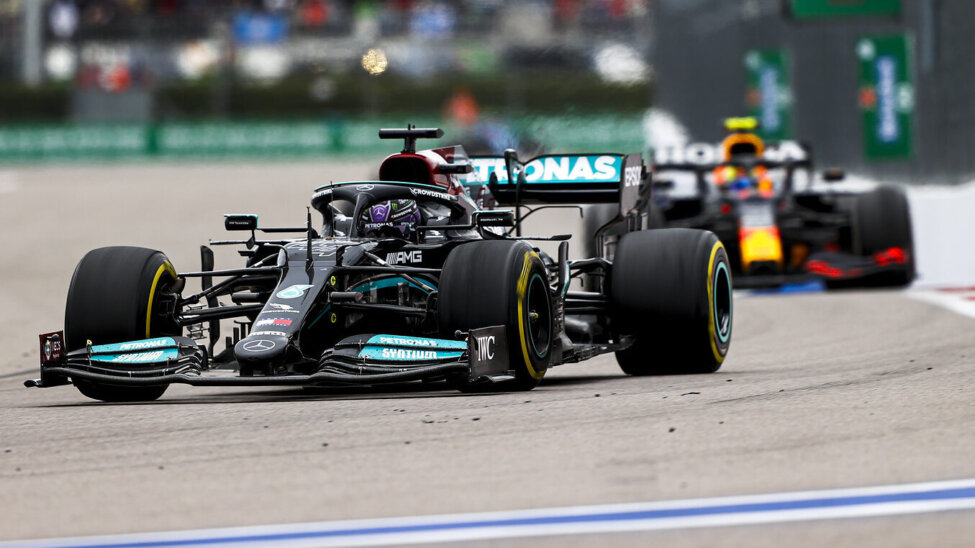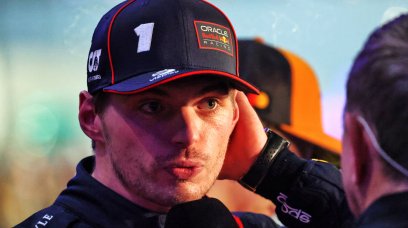Hard to believe, but today (March 16) marks the 10th anniversary of the first grand prix of the 1.6-litre V6 turbo-hybrid era.
It proved to be an inauspicious beginning as there were five power unit-related retirements at the curtain-raising event in Australia, with Mercedes' Lewis Hamilton, and newly-crowned four-time champion Sebastian Vettel in his Red Bull among the early casualties.
Mercedes, though, went on to dominate for eight seasons, since when they have been usurped by Red Bull and Max Verstappen over the past three years following the introduction of new aerodynamic regulations at the start of 2022.
Without a doubt, though, there have been some great races over the years. From the 206 grands prix to date, we have selected a few highlights.
As for you, our loyal readers, what have been your favourites? Please let us know in the comments section below the article.
Ian Parkes - 2020 Turkish Grand Prix
I hold my hands up and say this was not an outright racing spectacle that highlighted the performance of the power unit but for sheer entertainment value - and that is what we are talking about here - then this grand prix had everything, which you could file under the 'you can't make it up' category.
The race promoters deserved at least some credit for stepping into the breach in a Covid-hit year by offering up the Istanbul Park circuit for one of the rounds on a truncated calendar, even though it had not previously hosted for nine years.
In the build-up, the facilities were updated, whilst the track was also completely resurfaced. But in the cool mid-November conditions, there was no opportunity for the Tarmac to dry, leading to oils seeping up to the surface and dramatically reducing lap times when practice commenced.
Naturally, there were several spins, leading to the drivers complaining about the track ahead of a qualifying session that took place in wet conditions in Q1, which far from helped matters.
Even qualifying was remarkable as Lance Stroll became the first Canadian since Jacques Villeneuve in 1997 to claim pole. For his team, then known as Racing Point, it was its first pole since 2009 when it was known as Force India.
For the race, rain half an hour beforehand again made the track treacherous, leading to Alfa Romeo's Antonio Giovinazzi and George Russell in his Williams both spinning off on their reconnaissance laps, the former breaking the front wing of his car.
The start was typically chaotic, notably with Renault team-mates Daniel Ricciardo and Esteban Ocon colliding going into turn one, forcing Valtteri Bottas to take avoiding action in his Mercedes and to spin off across the run-off area.
Bottas, who went into the race with the slimmest of chances to take the title, was involved in an additional incident with Ocon later in the lap that left him with a steering issue - from which he struggled to recover - and the Frenchman with a puncture.
For a while, it appeared as if Stroll was poised to give Racing Point its maiden triumph. After negotiating the initial early pit stop from extreme wets to intermediates, he assuredly led for the majority of the opening half of the race, whilst many others, including Max Verstappen, suffered spins and minor offs.
When called in to switch to a second set of inters, a decision he remonstrated against, so his chance of victory disappeared as the track which had caused so many issues ultimately came to champion-in-waiting Lewis Hamilton, who had started from sixth.
The Briton had pitted for inters after lap nine, and continued on that set through to the end - a total of 50 laps - because whilst the circuit was never good enough for slicks, the rubber that wore down to almost the canvas by the chequered flag was enough to deliver Hamilton his record-equalling seventh drivers' title.
It was a masterclass in tyre management in the most extraordinary of circumstances.
Ewan Gale - 2014 Bahrain Grand Prix
Unlike the rest of the grands prix on this list, there was no need for gimmicks in what was just the third race of the turbo-hybrid era.
Mercedes may have been dominant at the head of the field but Lewis Hamilton and Nico Rosberg provided one of the great battles in F1 history as they continuously fought side-by-side through turns one to six.
It was the first race for Bahrain under the lights as opposed to the sweltering conditions of the day and the racing sparkled behind the front pair too, with similar battles taking place between the Williams and Force Indias for the final podium spot.
Red Bull and Ferrari were considerably off the pace yet both teams were able to fight for the minor points positions early on, ensuring the excitement extended across the grid.
A final sprint to the finish was enabled when Pastor Maldonado sent Esteban Gutiérrez's Sauber flipping at turn one to trigger the safety car, yet no matter how hard Rosberg tried, there was no getting past Hamilton for victory.
Red Bull took advantage of the late safety car to move up - Daniel Ricciardo finishing fourth after starting 13th - but Sergio Perez could not be denied a podium for Force India.
Pure racing bliss.
Jake Nichol - 2020 Italian Grand Prix
Between Pastor Maldonado's win in the 2012 Spanish Grand Prix and Lewis Hamilton's eight years later in Belgium, 162 races passed.
Only five teams won a race in that period - Red Bull, Ferrari, McLaren, Mercedes and Lotus as the top teams put F1 in a vice-like grip, leaving only the crumbs for the midfield runners in the form of the odd podium here and there.
That's what made Pierre Gasly's win in the 2020 Italian Grand Prix so special - the fact that it was unexpected, with Hamilton having set the outright fastest F1 lap of all-time in qualifying to stick the mighty Mercedes W11 on pole.
But then Mercedes dropped the ball, by pitting Hamilton when the pit-lane was closed after Kevin Magnussen's Haas ground to a halt.
Compounding the misery for Hamilton was that a red flag was deployed whilst he was being investigated after his sole pit-stop, meaning he could not go for broke, eke out as much of a lead as he could before pitting to serve the 10-second stop-go penalty in the closing laps.
He pitted at the end of the restart lap, setting up a thrilling chase between Gasly and Carlos Sainz in the McLaren.
Two midfield runners battling it out for a precious Grand Prix win after the top team fumbled? It was a throwback to a time F1 had left behind.
After all, that's why we settle down to watch a Grand Prix, right? For the hope, however slim that something out of the ordinary might just happen, that a midfield runner gets their day in the sun.
That is when F1 is at its best, delivering those shock, unexpected wins, which given the domination we see today, should be even sweeter the next time it happens.
Fergal Walsh - 2019 German Grand Prix
Truth be told, there are not many races that can be described as exciting when they involve a Max Verstappen victory - but this is one of them.
It has been coined the 'Race of the Decade' by F1 itself after fans voted the race as the best of the 2010s, even ahead of the unforgettable four-hour grind of the 2011 Canadian Grand Prix.
Mercedes entered the race weekend celebrating 125 years of motorsport activities and donned a special livery to mark the occasion. In a race that was supposed to mimic its great success, instead, it suffered one of its worst-ever races in F1.
Lewis Hamilton crossed the line in ninth place after being one of several drivers to fall victim to Turn 15's slippery run-off, while teammate Valtteri Bottas' event ended late on when he hit the barrier at Turn 1.
Sebastian Vettel rose from the back of the grid after a disastrous qualifying to take second place while Daniil Kvyat took Toro Rosso's first podium since Vettel's Monza victory in 2008.
The wet weather that persisted throughout kept us all on the edge of our seats, with even Verstappen's run to victory not going without a 360-degree spin.
The drama did not even stop at the chequered flag - a 30-second time penalty for both Kimi Raikkonen and Antonio Giovinazzi at Alfa Romeo saw Robert Kubica rise to 10th in the classification, claiming Williams' only scored point of the campaign.
Nick Golding - 2021 Russian Grand Prix
The Sochi Autodrom often delivered exciting opening laps but rarely an exciting Grand Prix, however, that all changed in 2021.
Lando Norris defied the odds to secure a maiden pole position, in what were challenging wet conditions. In a season which was dominated by Lewis Hamilton and Max Verstappen, neither driver featured in the top three on the grid.
To add to what was a thrilling qualifying, George Russell secured P3 for Williams, whilst Verstappen started from last.
The race began in dry conditions with Norris having led the bulk of the race, until the closing stages when a late heavy downpour turned the Russian Grand Prix on its head.
Norris infamously opted to brave the conditions on his slick tyres, a move which ultimately cost him his first ever F1 win. The McLaren driver slid off the circuit and ended up finishing in seventh.
Hamilton timed the move to intermediate tyres to perfection and claimed his 100th career victory. Verstappen, miraculously, finished second, a result which ended up being key to his title glory.
Don't miss out on any of the Formula 1 action thanks to this handy 2026 F1 calendar that can be easily loaded into your smartphone or PC.
Download the calenderMost read
In this article











Join the conversation!